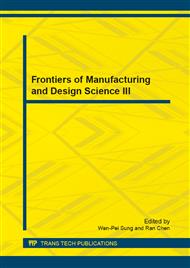p.636
p.641
p.645
p.650
p.657
p.663
p.668
p.674
p.679
Performance Prediction of Assembly Based on Dynamic Alignment
Abstract:
To change the status of time-consuming and over-reliance on technicians in mechanical system alignment process, performance prediction based on dynamic alignment was proposed. The mapping relationship between alignment process parameters and machine dynamic characteristics was established. A large number of computational experiments are implemented by adjusting the value of process parameters in order to learn and anticipate experimental data and also find out the rules of process parameters on machine dynamic characteristics. The method can optimize the alignment process, guide technician alignment, modify the theory mapping, and improve the alignment efficiency.
Info:
Periodical:
Pages:
657-662
Citation:
Online since:
December 2012
Authors:
Price:
Сopyright:
© 2013 Trans Tech Publications Ltd. All Rights Reserved
Share:
Citation:


